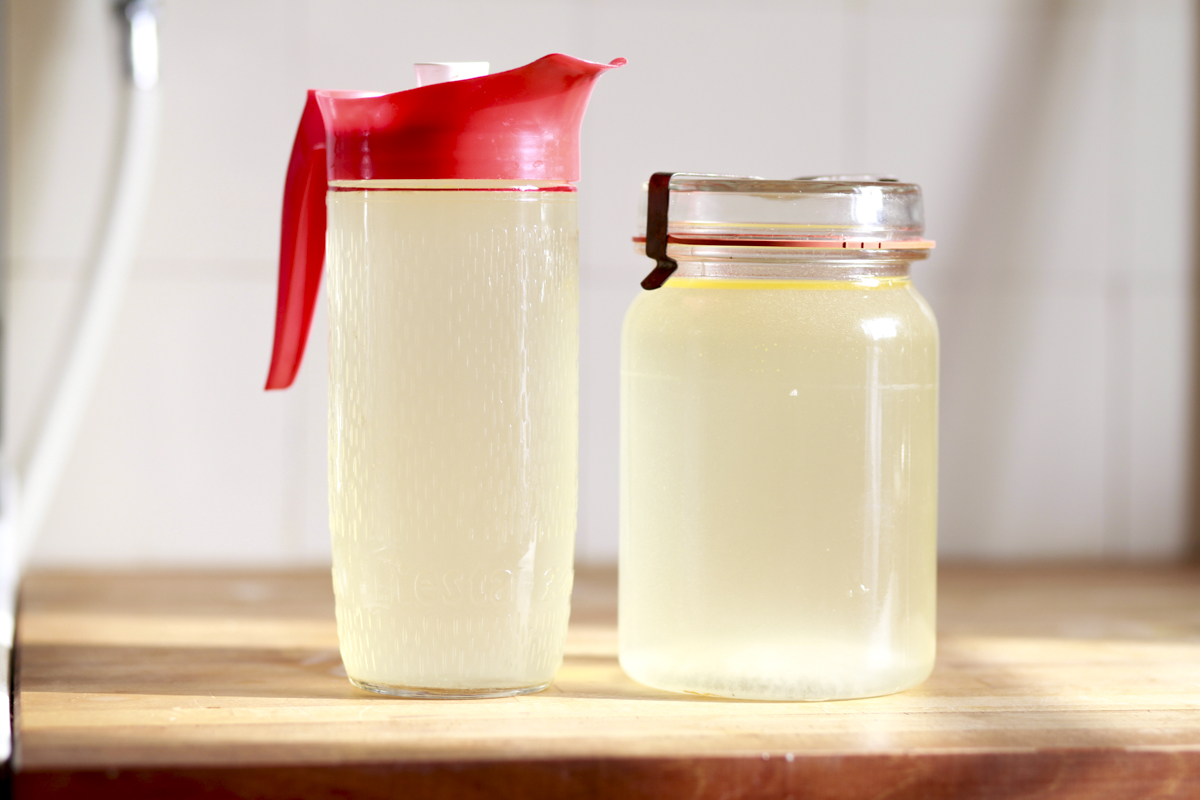I had my first Suisse pot-au-feu last February while tucked away in the snowy mountains. This was the traditional version, with beef, bones and vegetables slowly simmered on the stove, carrots and leeks ladled from the broth then salted and slathered with grainy mustard, broth and tender meat sopped up with, not fork, but hunk of crusty bread. It was just the kind of cheek-flushing, sweater-no-longer-necessary, deeply-warming meal that the (witch) doctor ordered.
Pot-au-feu, or literally pot-over-fire, can be said to be France’s national dish. Recipes for pot-au-feu are as various as the country’s regions, the families living in those regions. The main point of pot-au-feu, from my vantage, is to gather honey from a weed: a low-cost (read: tough) cut of meat, some bones, some vegetables, a few sprigs of something green all turned tender, transcendently so, with the aid of heat and time. The perfect meal for the first truly cold early winter Sunday with an extra-special bonus for une femme comme moi.
Isn’t it Iron-ic?
I’ve said before that L & I really only eat meat once or twice a week, but this all changes for me during, borrowing my Ethnobotany professor’s line, my moon-time. (For the more literal friends and/or the men among us, I mean menstruation. Yep, just said menstruation on the internet. Girl power!) Us moon-timing women require 18mg of iron per day, as we’re losing 30-40mg of iron each month during our cycle. Iron is one of the most difficult minerals to absorb and, although iron absorption increases with increased need, it takes several months to completely replenish iron concentration in the blood so it’s important to keep levels consistent. (Haas, 188)
Iron is actually a micro-mineral, or an essential trace mineral, yet it receives way more attention than some of the big gun macro-minerals like sulfur. This speaks to two things: the first being just how important iron’s role is in our health. Iron helps to form hemoglobin. Hemoglobin carries oxygen molecules throughout our body. Red blood cells pick up oxygen from our lungs and distribute it to the rest of our tissues, all of which need oxygen to survive. To put it concisely: If we lack iron, we lack hemoglobin and therefore our tissues lack oxygen. More concisely: no iron, no energy. Even more: no Fe = no Fun. The second thing: although iron exists in many food sources it’s also damn difficult to absorb, and not just for us moon-timers.
Heme vs. Nonheme
Two forms of iron exist: heme and nonheme or, simply, animal and vegetable. Heme is found only in animal foods–it’s highest in liver and beef–and is the most easily absorbed and utilized form of iron. Nonheme is found in vegetable sources–like spinach and pumpkin seeds–and, as even my vegetarian-leaning nutrition book admits, is quite poorly absorbed and utilized by our bodies. (Haas, 188)
To further complicate matters for the herbivores amongst us, the highest sources of nonheme iron–whole grains and dark leafies like spinach and chard–contain certain compounds–phytates and oxalates respectively–that actually bind to iron, inhibiting its uptake and making it even less easy to absorb. Further still, soy, a common source of protein in many a vegetarian’s diet, has been shown to decrease iron absorption.
Absorbing it All
You can see now that the main concern with iron is absorption. The bad news is that there are other factors negatively affecting this besides the aforementioned ones. These include caffeine and tannic acid in coffee and tea, phosphates in industrial meats and soft drinks, antacids and the less easily remedied low stomach acid and fast gastrointestinal motility.
The good news is there are a few ways to positively affect iron absorption as well. Vitamin C (sauerkraut with pot-au-feu!), the use of iron cookware (cast-iron dutch-oven for pot-au-feu!), and the combination of heme and nonheme sources (a kale salad with a heap-load of seeds with your pot-au-feu!).
Before I get to the recipe, I’d like to quickly discuss supplementation. Elements of inorganic iron–such as those used to supplement refined flour–are dubious. In that form, iron can’t be utilized by the body and its build-up in blood and tissues is toxic. Elevated amounts have been linked to heart disease and cancer. (Fallon, 44) If supplementing, it’s best to use a supplement derived from whole foods rather than one synthesized in a lab.
Ingredients
- 1 pound beef shoulder or brisket
- 2 pieces of oxtail or marrow bones
- 2 medium-sized yellow onions
- handful of carrots
- handful of turnips
- 1 leek
- two handfuls of new potatoes
- 5 cloves garlic
- bouquet garni with sage, rosemary and thyme
- salt and pepper
- knob ghee
Directions
- Heat oven to 200F. Lightly rub your cut of beef with salt and pepper. Heat cast-iron dutch-oven on stove-top and add knob of ghee. Once dutch-oven is hot, sear beef on each side for 1 minute or so. Remove from heat immediately.
- Place oxtail or marrow bones in dutch-oven with beef. Cover and place into oven.
- While your meat is roasting, prepare your vegetables, roughly chopping them so they are more or less the same size. The turnips and potatoes we used were small, so we just chopped them in half. You can peel your vegetables, or not. Leave garlic whole. Prepare your bouquet garni by tying a few sprigs of thyme, rosemary and sage together with string.
- After your meat has roasted on its own for about an hour, add vegetables and bouquet garni to dutch-oven. Keep roasting for another hour-and-a-half, checking on meat to see if it's tender.
Serve with grainy mustard, pickled things and a hunk of crusty bread (to spread your roasted bone-marrow on).
References:
Haas, Elson M, 1992, 2006. Staying Health with Nutrition. Berkeley, Celestial Arts.
Fallon, Sally, 1999, 2001. Nourishing Traditions. Washington, DC. Newstrends Publishing Inc.


